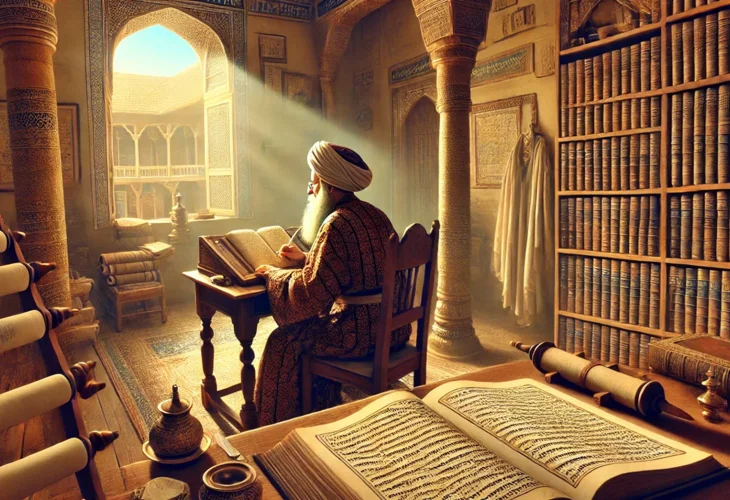Torah Personalities
The Gaon Who Lit Up the Darkness: How Rav Saadia Gaon Shaped Jewish Thought for Generations
In an era shrouded in silence, the voice of one brilliant sage rose above the confusion, defending faith, defining Jewish philosophy, and battling heresy with clarity and courage

A Lone Light in a Forgotten Era
In Jewish history, as in general history, some periods are well-documented and rich in sources and findings, while others are nearly lost to time. The age of the Geonim, which followed the Talmudic era and preceded the Rishonim, remains largely hidden in the shadows. We know the names of many Geonim but possess very few of their writings. What survives is often no more than brief responsa scattered across later works.
But one name breaks through the obscurity: Rav Saadia Gaon, known by the acronym Rasag.
Born in Fayoum, Egypt, Rasag emerged from a region not known for Torah greatness at the time (the true centers of learning were the great yeshivot of Babylon). Yet from a young age, he began writing prolifically. For centuries, the scale of his scholarship was underestimated because so many of his works were lost, until the discovery of the Cairo Genizah, which revealed just how vast and visionary his writings were.
Rasag wrote on virtually every topic: Hebrew grammar, halachah (Jewish law), polemics, Bible commentary, and Jewish philosophy. In many areas, he was a trailblazer whose influence shaped the course of Jewish thought for centuries.
Faith Under Siege and a Scholar Who Fought Back
Rasag lived in a time of immense confusion and spiritual struggles within the Jewish world. Karaite Judaism, which rejected the Oral Torah, was spreading rapidly, producing books and gaining followers. Meanwhile, Islamic philosophy was attracting many Jews with its sophisticated arguments. And then there was Hiwi al-Balkhi, who authored a book posing two hundred poetic challenges to the Torah, mocking miracles and denying free will.
At just 23 years old, Rasag began publishing works countering the Karaites, writings that played a major role in their decline. He also penned a direct response to Hiwi al-Balkhi, titled Teshuvot al Hiwi, answering each challenge and ridiculing Hiwi’s ignorance of true Torah understanding.
It was in this climate of doubt and intellectual upheaval that Rasag wrote his masterpiece: Emunot VeDeot, the first systematic Jewish philosophical work. Its goal was unprecedented—to establish and prove the core tenets of Judaism through philosophical reasoning. The very idea of needing to “prove” Judaism philosophically had never been attempted before.
In this groundbreaking book, Rasag refuted Christianity, Islam, and other belief systems of the time. He offered clear proofs for the creation of the world, the oneness of Hashem, and the truth of Torah, guiding readers with logic, clarity, and unwavering faith.
A Legacy That Still Illuminates
Emunot VeDeot was the first of many great works in Jewish philosophy, paving the way for Rabbi Yehuda HaLevi’s Kuzari and the Rambam’s Moreh Nevuchim. Though most of the Geonic era remains veiled in silence, the brilliance of Rasag pierces the fog and forms a beacon of Torah and truth in an uncertain world.
His unwavering commitment to defend and define Judaism in an era of doubt ensured that the flame of Torah would not flicker. Through his writings, Rasag continues to speak, illuminating hearts and minds to this very day.

